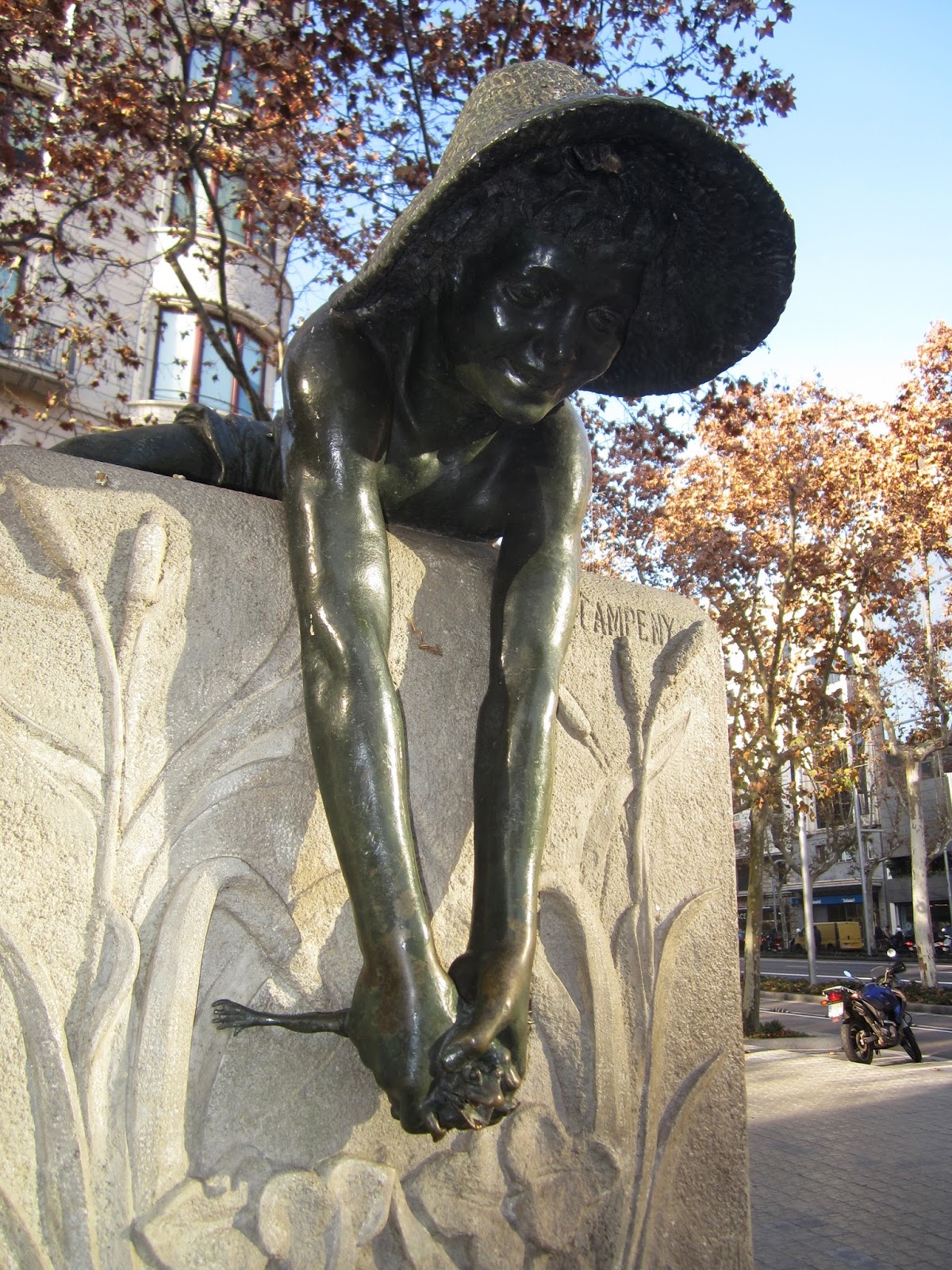
At the intersection of Diagonal Avenue and the beginning of Còrsega Street, a young man holds a frog, while it, with its mouth open due to the pressure of the hand that captures it, struggles to free itself. This scene, which has gone unnoticed by many, is known as the Font de la Granota and is an example of hidden art and beauty in Barcelona.
The Italian restaurant «Bosco de Lobos BCN» arrives in the heart of Barcelona’s Diagonal.
The Font de la Granota, whose name could be translated as “Fountain of the Frog,” is a work of naturalistic style, created with an impressive realism in its anatomy and a dynamic expression that seems to capture the exact moment when the young man catches the frog.
This fountain was inaugurated in the distant 1912 as part of an ambitious municipal program aimed at beautifying Barcelona’s Eixample with water fountains that were both useful and decorative.
La Font de la Granota, a sample of the art of Josep Campeny
.
Prominent artists of the time were hired to carry out this project, and one of them was Josep Campeny, a sculptor born in Igualada. Campeny had studied at the Llotja, the prestigious school of fine arts in Barcelona and left his artistic mark on several fountains in the city.
In addition to the Font de la Granota, he created two other famous fountains: the Trinxa, located on Pelai Street next to the Universitat ring road, and the Noi dels Cántirs, located in Plaza Urquinaona.
The best gyms in Barcelona Are you up for it?
The Font de la Granota, along with its two artistic “sisters”, is mainly made of bronze. The sculpture rests on a pedestal of Montjuïc stone.
On the water basin, one of the two versions of the coat of arms of Barcelona that became official in the 19th century is carved, although without the royal crown or the bat.
The frog’s mouth, completely open due to the force with which the child holds it, serves as a spout through which the water flows. However, the button that controls the flow of water is on one of the stone side blocks that make up part of the fountain.
A revival after an accident
.
The Font de la Granota has stood the test of time and has also overcome more recent challenges. In 2009, the fountain suffered a devastating accident when a truck ran over it. Months later it was restored.
Interestingly, Barcelona’s Font de la Granota has a smaller “sister” located on the Rambla de Igualada, Josep Campeny’s hometown. This fountain is a replica made by Josep Renom i Costa and presents some differences, such as a simpler pedestal and the figure of the child made of cast iron and painted to imitate bronze.
